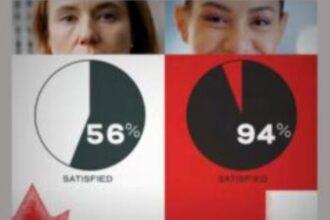In a comprehensive assessment of regional health trends, Huron Perth Public Health officials unveiled their much-anticipated 2024 Community Health Report yesterday, revealing both encouraging improvements and persistent challenges across the two-county region.
“What we’re seeing is a complex health landscape that requires targeted interventions,” explained Dr. Miriam Klassen, Medical Officer of Health for Huron Perth, during the virtual press conference. “While we’ve made significant strides in several areas, particularly in vaccination rates and mental health awareness, other indicators suggest we need to redouble our efforts.”
The 87-page report, compiled using data from both provincial health databases and local surveys, highlights a notable 12% decrease in smoking rates among adults since 2019, positioning the region slightly below the provincial average for the first time in over a decade. Childhood immunization compliance has also improved, with 93% of school-aged children now fully vaccinated against measurable diseases—up from 88% in the previous reporting period.
However, the report identifies concerning trends that mirror challenges seen across Canada. Access to primary care remains problematic, with approximately 15% of residents lacking a family physician, a figure that rises to nearly 22% in more rural parts of the region. Wait times for specialized care continue to exceed provincial targets, particularly in mental health services where patients report waiting an average of 7.2 weeks for initial consultations.
“The physician shortage isn’t unique to our region, but its impacts are particularly acute in our rural communities,” noted County Warden James Anderson. “When combined with transportation barriers, we’re seeing real disparities in health outcomes between our urban and rural populations.”
The report also draws attention to demographic shifts affecting health service delivery. Huron Perth’s population over age 65 has increased by 18% since 2019, creating additional pressure on home care services and long-term care facilities. Concurrently, substance use disorders have climbed by 9% across all age demographics, with opioid-related incidents requiring emergency response increasing by 14% year-over-year.
Public health officials emphasized several strategic initiatives planned for the coming year, including expanding mobile health services to underserved areas, launching a digital mental health platform targeting youth and young adults, and enhancing chronic disease prevention programs in partnership with community organizations.
“The data tells us where to focus, but addressing these challenges requires community-wide effort,” said Regional Health Coordinator Samantha Wong. “Our healthcare networks alone cannot solve structural issues like housing affordability, food security, and transportation barriers that directly impact health outcomes.”
The report received mixed reactions from community stakeholders. Healthcare advocates praised its transparency while expressing concern about the pace of improvement in critical areas. Local business leaders highlighted the economic implications of population health, noting that workforce wellness directly affects regional prosperity.
As implementation of the report’s recommendations begins, residents can expect to see increased outreach from public health officials at community events and through targeted campaigns. The full report is available on the Huron Perth Public Health website, with summary documents being distributed to municipal offices throughout the region.
As our communities navigate these health challenges in the post-pandemic landscape, a critical question emerges: How can urban and rural residents work together to ensure equitable health outcomes across the diverse communities that make up Huron and Perth counties?


















